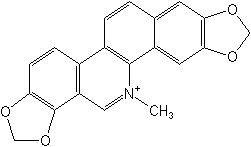ATC code none PubChem CID 5154 UNII AV9VK043SS | CAS Number 2447-54-3 ChemSpider 4970 ChEBI CHEBI:17183 | |
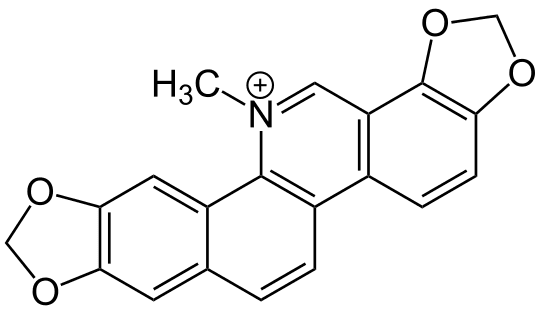 | ||
What does sanguinarine mean
Sanguinarine is a toxic polycyclic quaternary ammonium salt. It is extracted from some plants, including bloodroot (Sanguinaria canadensis), Mexican prickly poppy Argemone mexicana, Chelidonium majus and Macleaya cordata.
Contents

How to pronounce sanguinarine
Toxicity
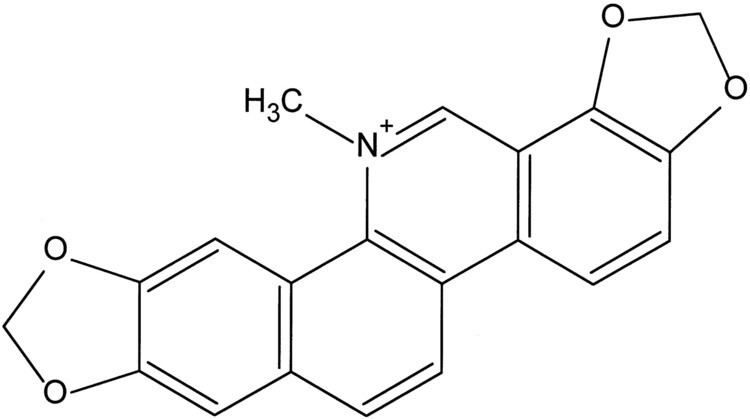
Sanguinarine is a toxin that kills animal cells through its action on the Na+-K+-ATPase transmembrane protein. Epidemic dropsy is a disease that results from ingesting sanguinarine.
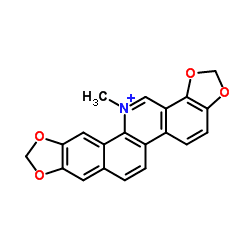
If applied to the skin, sanguinarine may cause a massive scab of dead flesh, called an eschar. For this reason, sanguinarine is termed an escharotic.
Medical study
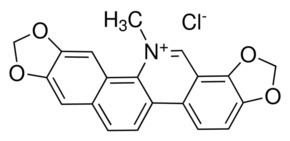
Preliminary pre-clinical in vitro and in vivo studies have demonstrated that sanguinarine causes apoptosis in human cancer cells, and recommend study of sanguinarine as a potential cancer treatment. A study conducted by the Case Western Reserve University in 2000 found that low doses of sanguinarine caused this apoptosis in cancerous human epidermoid carcinoma cells while little reaction from normal human skin cells was observed. However, no products containing sanguinarine are currently approved by the FDA for the treatment of cancer; the FDA warns that unapproved bloodroot preparations are ineffective and dangerous.
Biosynthesis
In plants, sanguinarine is synthesized from dihydrosanguinarine through the action of dihydrobenzophenanthridine oxidase.
